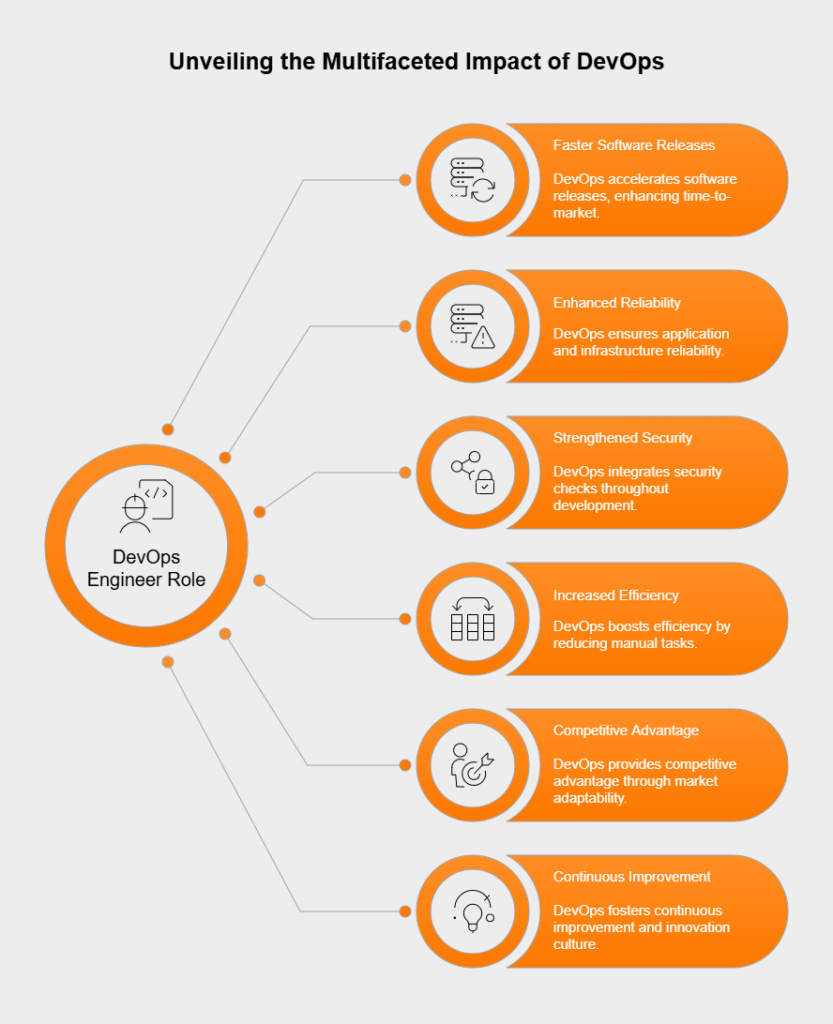Lead DevOps Engineer: A Closer Look at the Role
- June 15
- 11 min

A DevOps engineer is essentially an IT professional who brings together expertise from both software development and IT operations. Their main job is to streamline and automate the entire software development lifecycle (SDLC)—covering the build, test, deployment, and maintenance of applications and systems. This position arose from the need to connect development teams, often pushing for rapid feature delivery, with operations teams concerned primarily with system stability. Ultimately, the goal is to accelerate the development cycle, deploy changes more frequently, and ensure dependable releases, effectively linking IT activities to business goals.
A big part of a DevOps engineer’s job is tearing down the old walls—those traditional silos separating development, operations, quality assurance, and security teams. They serve as a vital link between development and operations, fostering an environment where everyone shares responsibility, information flows openly, and teams understand each other’s perspectives. Better communication, along with shared objectives and ways to measure success, helps build a true DevOps culture. This kind of teamwork thrives on feedback and fits naturally with Agile and Lean approaches, helping everyone pull together to deliver real value more effectively.
DevOps engineers wear many hats, managing a variety of tasks aimed at making the SDLC more efficient, reliable, and fast. Their work usually demands a mix of skills spanning development, IT operations, and particularly automation.
One core duty is setting up and managing automated pipelines for Continuous Integration (CI) and Continuous Deployment/Delivery (CD). This means using specific tools to handle code building, testing, and deployment automatically. Doing so cuts down drastically on manual work, reduces the chance of errors, and speeds up how often software updates can be released. These CI/CD pipelines are really the backbone of fast, dependable software delivery today.
Instead of setting up IT infrastructure manually, DevOps engineers define and manage it using code – a practice called Infrastructure as Code (IaC). They rely on configuration management tools such as Ansible, Puppet, or Chef, and provisioning tools like Terraform, to automate how servers, networks, and databases are configured. This approach guarantees that the infrastructure is consistent, easily reproducible, and can scale smoothly, whether it’s running in a company’s own data center (on-premises) or on cloud environments like AWS, Azure, or GCP.
Keeping things running smoothly is absolutely vital. DevOps engineers set up and oversee monitoring and alerting tools that keep a close eye on application performance, the health of the infrastructure, and what users are experiencing, all in real-time. Their job includes making sure systems are reliable and always available (high availability). This often involves standard system administration duties, spotting potential problems before they cause trouble, and digging into performance data to find ways to make things run better.
Nowadays, security isn’t just tacked on at the end; it’s woven throughout the entire DevOps workflow, often called DevSecOps. DevOps engineers play a key role in building security measures right into the development process from the start. This involves automating security scans, conducting vulnerability assessments, handling sensitive information securely (secrets management), and making sure everything meets compliance standards and follows secure coding guidelines.
If something goes wrong in production – an issue or a full outage – DevOps engineers are usually right there in the thick of incident management and troubleshooting. They focus on fixing problems quickly, figuring out the underlying reason through root cause analysis, and crucially, sharing what they learned back with the development and operations teams. This essential feedback loop fuels continuous improvement and helps stop the same problems from happening again.

This job requires a special mix: deep technical know-how combined with strong people skills to handle both complex systems and team dynamics effectively.
A DevOps engineer needs a wide range of technical abilities, typically including:
Technical chops aren’t enough; certain soft skills are vital for a DevOps engineer’s success:
DevOps engineers use a diverse set of tools, sometimes called a DevOps toolchain, to automate and handle various parts of the SDLC. The exact tools depend on the company, but here are some common types and examples:
Being effective isn’t just about knowing individual tools; it’s about skillfully weaving them together to build smooth, automated workflows.
The DevOps engineer role is so important today because it tackles the core challenges of delivering software in today’s complex and fast-moving world. Through automation, better collaboration, and a constant focus on feedback, DevOps engineers help companies achieve several key advantages:
In essence, they are crucial drivers for digital transformation and making businesses more agile through smarter technology use.
The DevOps engineer position marks a real departure from more traditional IT roles, such as specialized Software Developers or System Administrators. In the past, development and operations teams frequently operated in separate silos, sometimes with competing priorities – developers focused on shipping features quickly, while operations aimed for maximum stability. This often created tension and slowed down software releases.
A DevOps engineer, however, takes a broader, end-to-end view of the SDLC. They operate cross-functionally, stressing shared responsibility, comprehensive automation, and ongoing processes like integration, delivery, monitoring, and feedback loops. Whereas traditional roles might concentrate heavily on just coding or just infrastructure upkeep, the DevOps engineer connects these areas, using skills from both worlds to fine-tune the whole system for speed, reliability, and efficiency. This approach allows for a significantly faster release frequency than older operational models.
